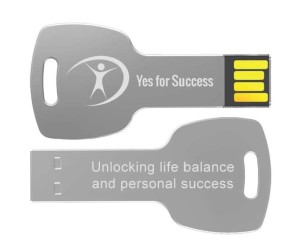Captain David Marquet spent 12 months learning every pipe, the procedures, the people, computer programs and the layout of the USS Olympia. Two weeks before he was to be deployed he was assigned to a different submarine, the newer nuclear powered USS Santa Fe. Upon taking command of his ship he did what every good naval Captain did. He gave orders.
“Engineer, start-up the reactor.” “Aye Captain!”
 “XO make preparations to get underway.” “Aye Captain!”.
“XO make preparations to get underway.” “Aye Captain!”.
All was as expected. He was expected to give orders and the crew expected to follow orders.
On the ships first day at sea he decided to test the technicians, so he ordered the crew to ‘fake‘ a fault that would shut the reactor down. The engineers had the task to restart the reactor as soon as possible. When this occurs the ship operates from its backup battery engine. In an effort to create urgency, Captain Marquet ordered his Navigator, the most experienced sailor on board the USS Santa Fe to, “Go ahead two-thirds.” “Aye Captain! Helmsman, ahead two-thirds!”
Such action would drain the back up batteries at a faster rate, placing time pressure on the technicians to restart the reactor so that the main engine could return to operation.
“Aye Nav!” called out the helmsman.
But nothing happened. The vessel did not increase in speed. Even Captain Marquet could tell that nothing had happened. Yet the order had been given.
Peering around the telescope at his helmsman, Captain Marquet could see his hunched shoulders, indicating something was wrong. So he walked over to his helmsman.
“Helmsman, why hasn’t the ship proceeded to two-thirds?”
“Sir, there is no two-thirds speed on this ship.”
Captain Marquet had made a mistake. As all ‘good‘ command and control leaders do in such a circumstance he covered up his mistake.
“Good job Helmsman, you passed the test!”
He then questioned the Navigator. “Did you know that this ship could not proceed at two-thirds on battery power?”
“Yes.” replied the navigator.
“So, why did you give the order?” queried Captain Marquet.
“Because you told me, Sir.” came the reply.
Here was the most experienced sailor on the ship passing on an order from the most inexperienced person aboard the ship that he knew was wrong and he did it purely because of rank. He did this even though they were aboard a nuclear submarine where the consequences for errors are potentially catastrophic.
In that moment Captain Marquet knew that something had to change if he and the crew were going to make it safely through his captaincy.
He realised that even if he had been given the USS Olympia, the complexities involved in running a nuclear powered ship were such that it was ridiculous to think that any single person could know everything there was to need to know to properly run the ship. The command and control model of leadership was flawed.
So he met with his senior crew and they discussed their dilemma. They resolved that he would no longer make any orders (although he did keep the authority to launch weapons as he felt that because they could kill people it wasn’t appropriate to pass that responsibility on to someone else).
To support this change in behaviour they changed their language. The navigator would say, “I intend to submerge.” Captain Marquet would reply, “What two questions do you think I have in my head?”
“Is it safe and is it the right thing to do? Both questions are affirmative.”
And the Navigator would submerge the ship.
Captain Marquet decided that as far as possible authority needed to be given to where the information existed. So the crew in the engine room were the best placed to know when to replace the filters because they knew the engine and they knew when the ship needed to be quiet because of what it was doing and when it was okay for it to be making more noise, which it would be doing when maintenance was taking place. For such a system to run successfully two pillars need to be present.
1. Competence. Each crew member had to be competent at what they were doing. They had to be trained and be ‘expert’ in their role.
2. Clarity. This was provided by the answer to the question, “Is this the right thing to do now?”
Upon deciding to take this action improvements were made in 24 hours. It took under three years for the culture to be fully imbedded throughout the 135 crew on board the USS Santa Fe. Their results included the highest assessment score for any naval vessel in the history of the US Navy and the highest re-enlistment score of any submarine, which meant that the sailors wanted to continue to serve in that high performing environment.
The biggest challenge that Captain Marquet faced? Himself. His own need and desire to be in control was his biggest challenge. But he managed to resist his own needs to become a better leader.
If such a culture change can occur in the navy, why couldn’t it occur in your organisation? The lessons here are self-evident. Give control to where the information is; make sure your team members are competent in what they do (which includes selection and training); and make sure your people understand the ‘big picture’ so they have the ability to work out if their actions are the right thing to do at any moment.
These are powerful lessons on leadership. Give them a go. The results will astound you.
View a short video of a TEDx Talk that Captain David Marquet gave here.
Gary Ryan enables organisations, leaders and talented professionals to move Beyond Being Good.









